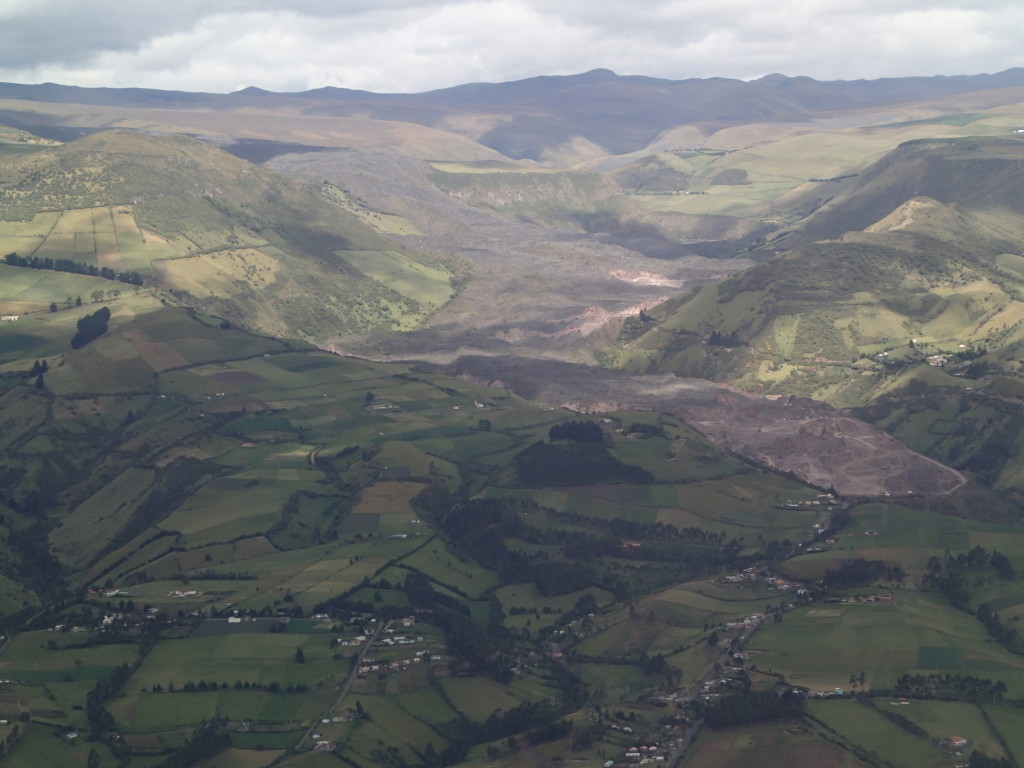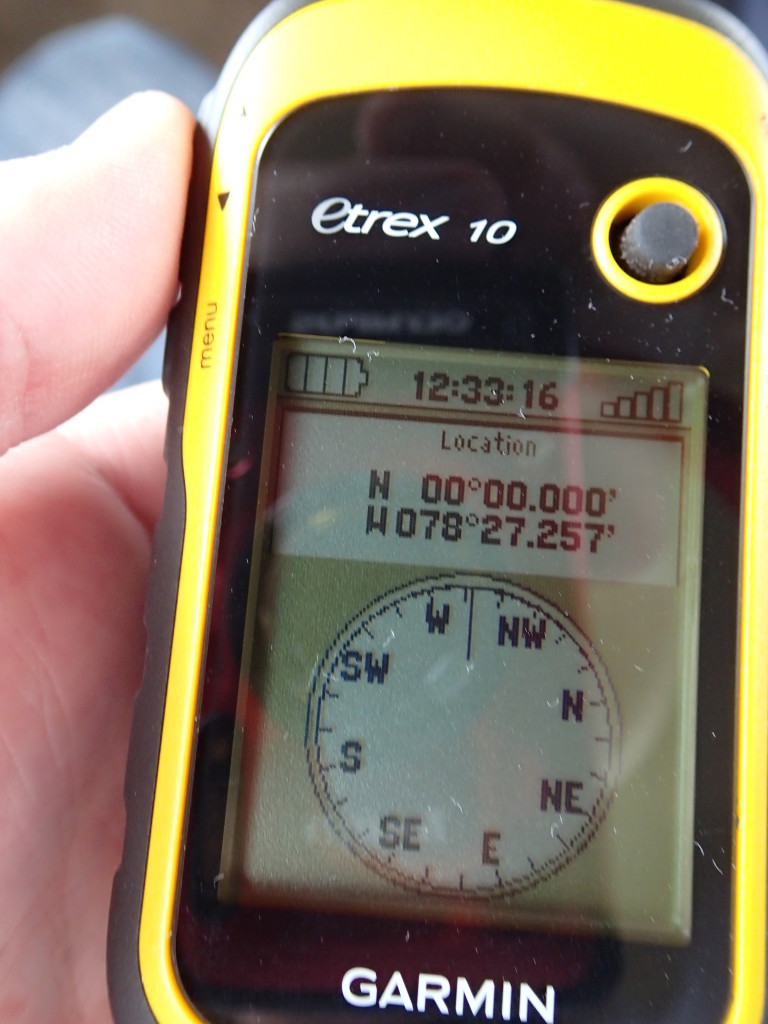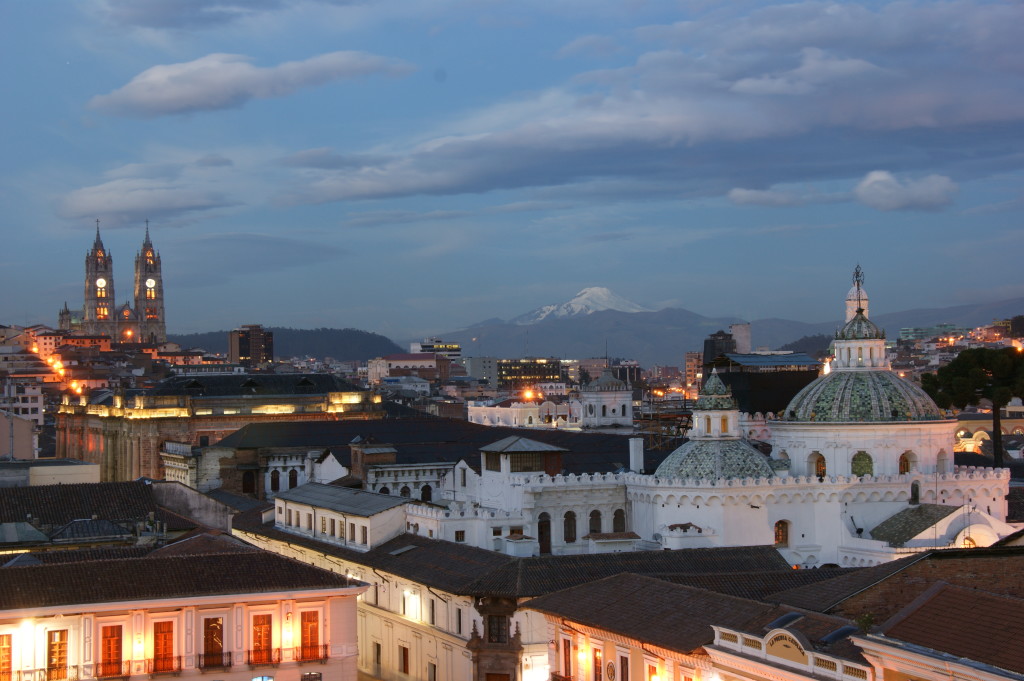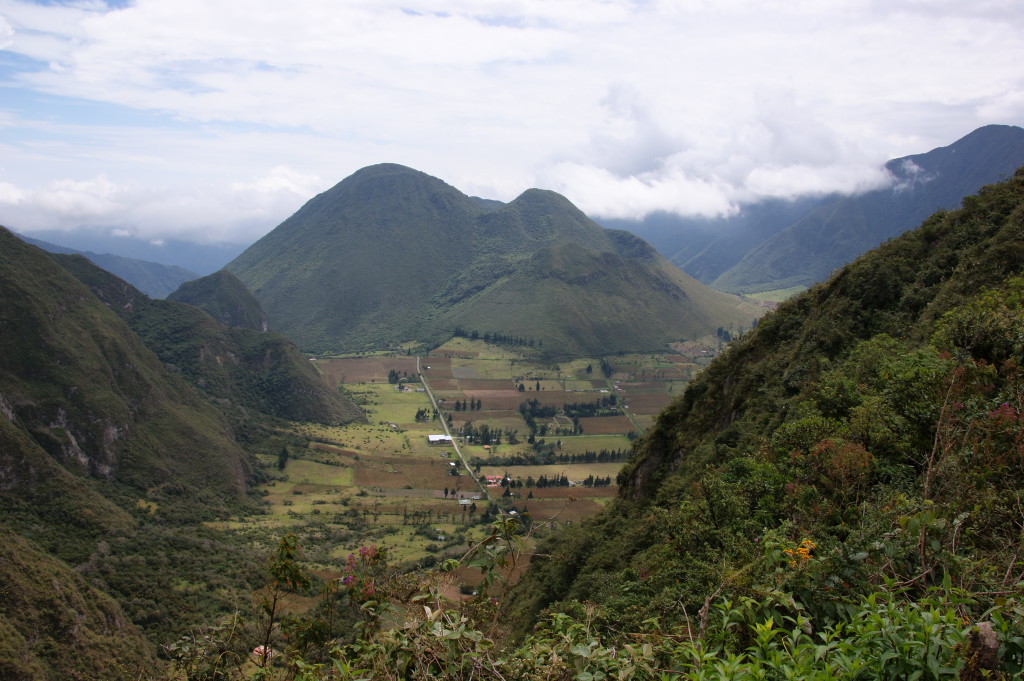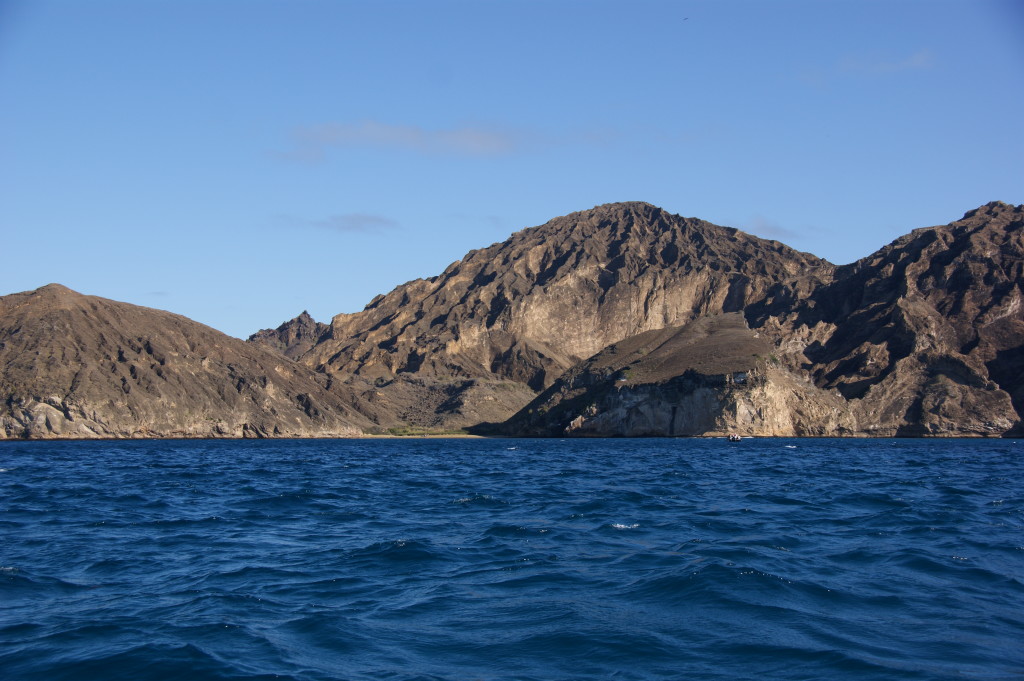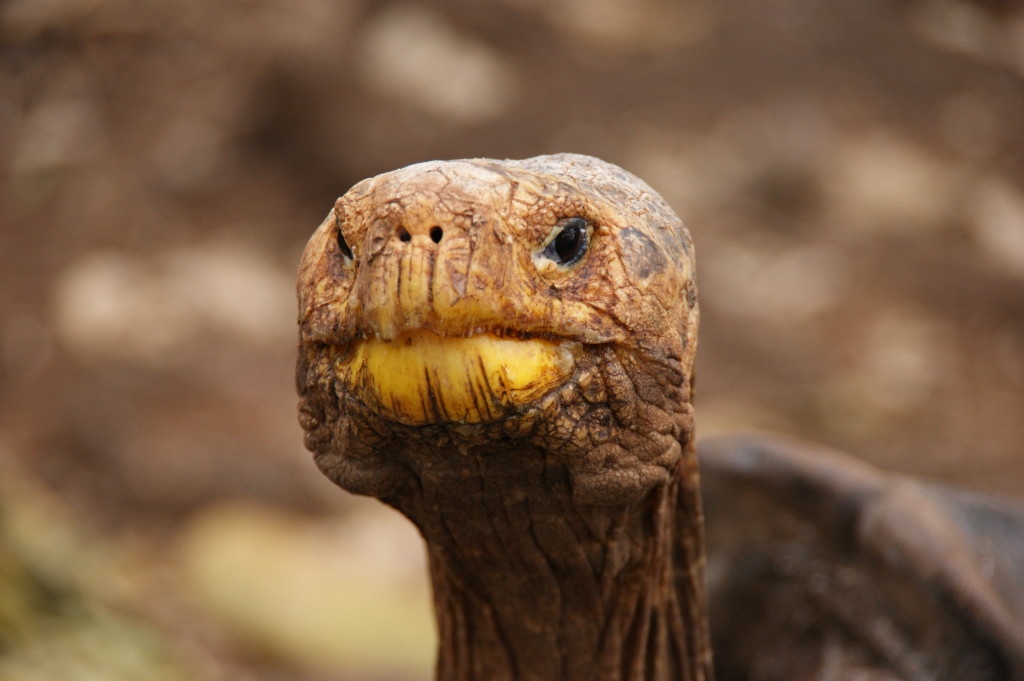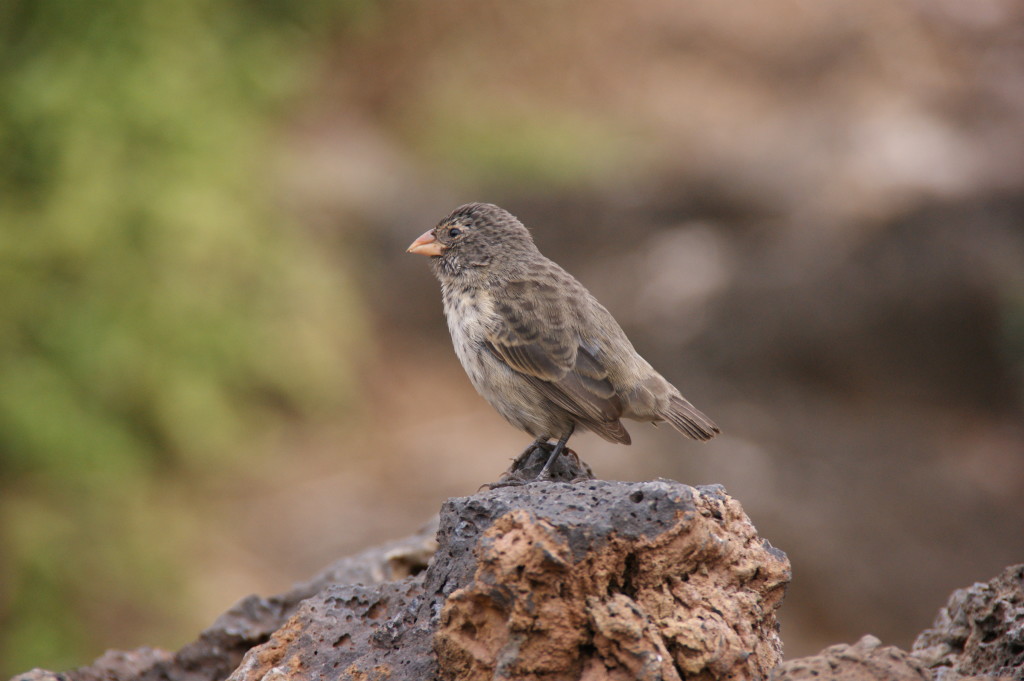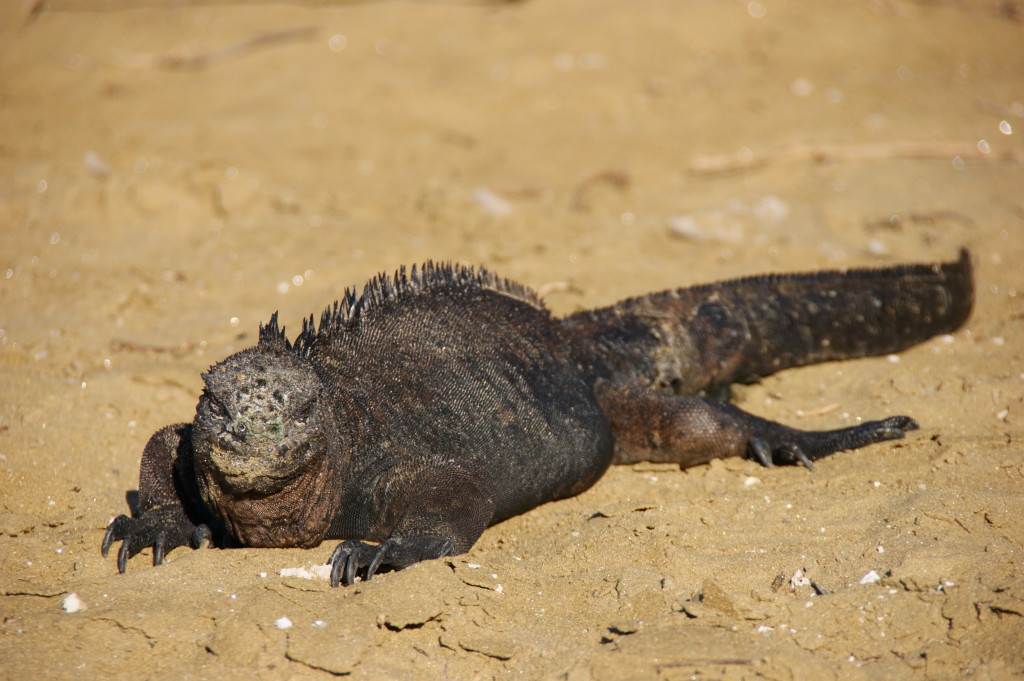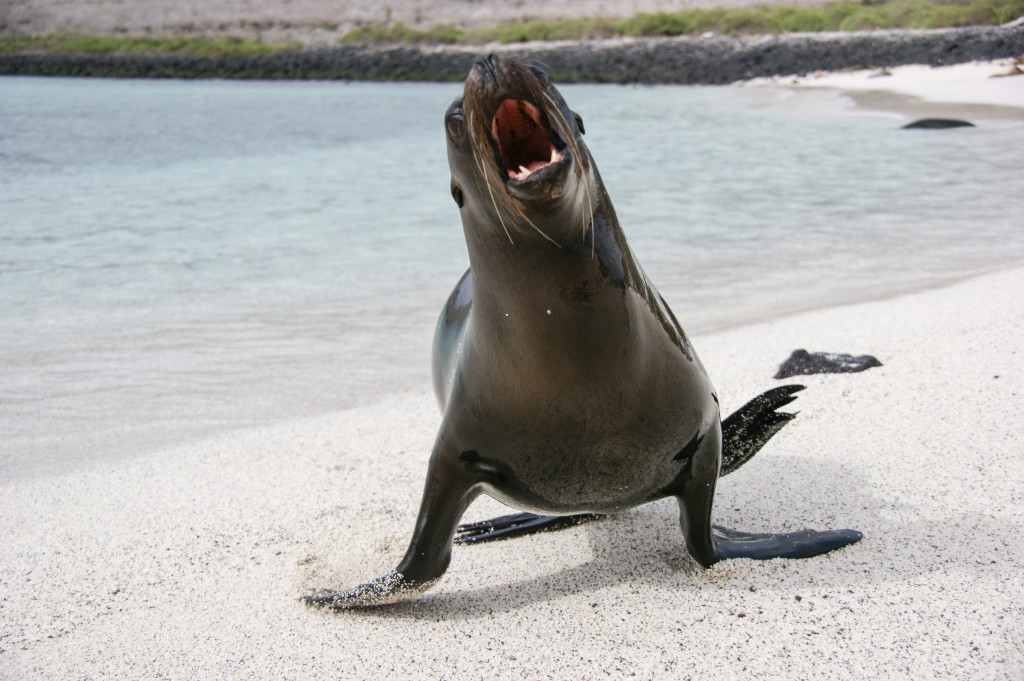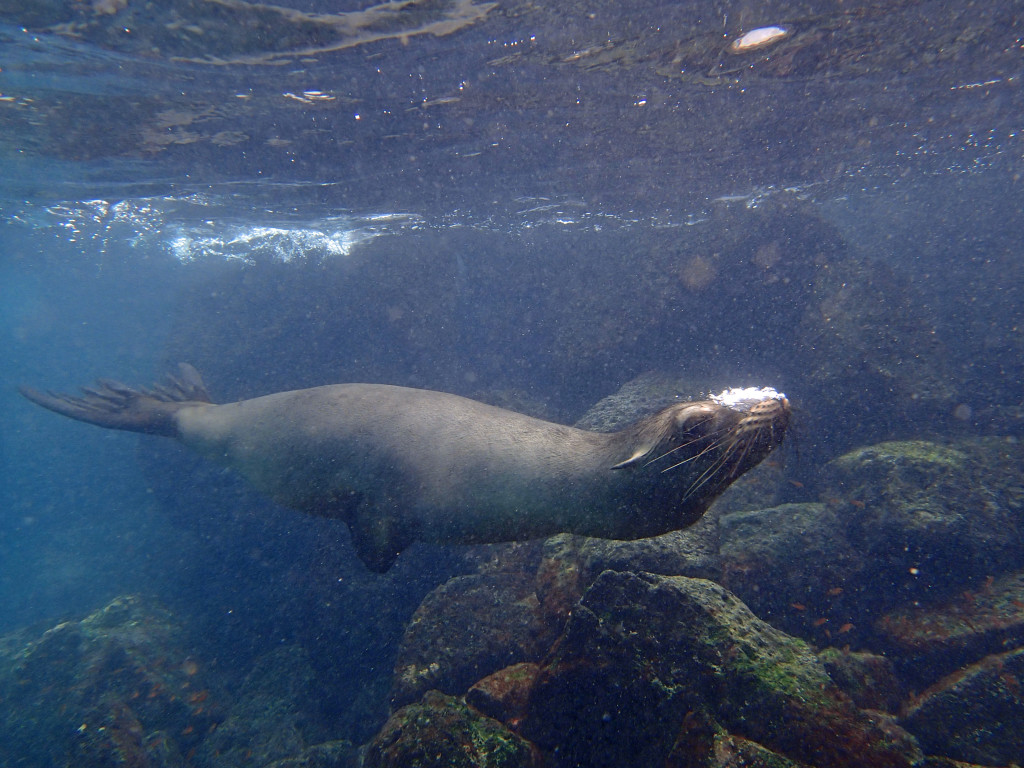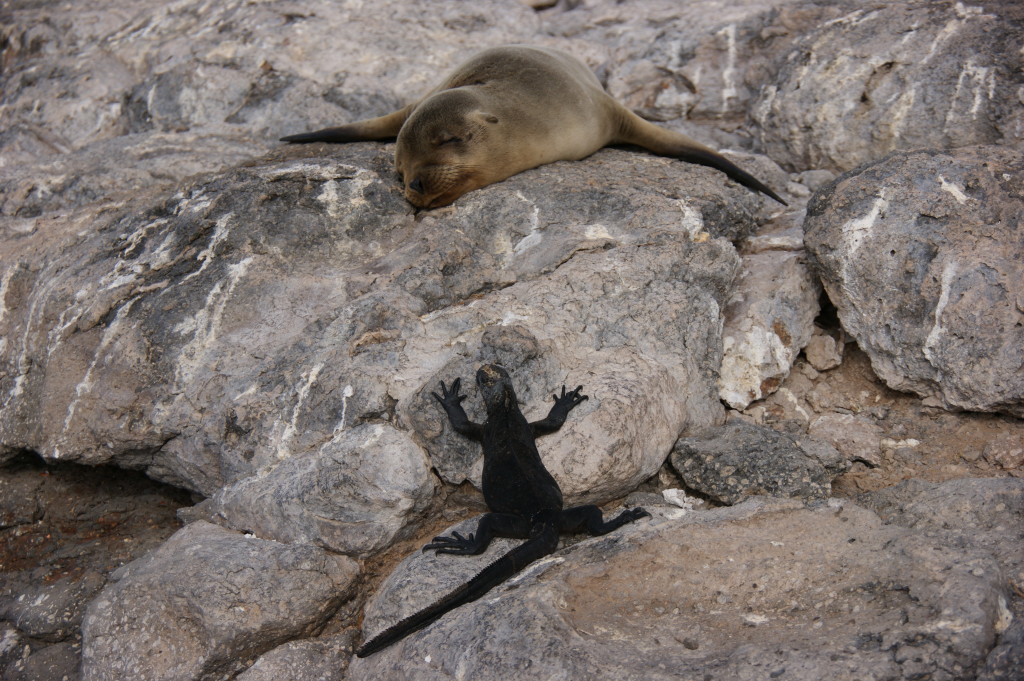Jonathan Dean is a postdoc at the British Geological Survey. Here he shows some of his holiday snaps from Ecuador and highlights the interesting geology of the country.
To get a break from writing up my thesis a couple of years ago, I went on holiday to Ecuador, where there is some amazing geology!
We flew to Quito, the capital, from Lima and I was really excited to see the volcano Chimborazo (at least I’m fairly confident that is what the photo is of!) out of the window. Chimborazo is 6,268 metres above sea level, compared to Everest’s 8,848 metres. However, the Earth is not a perfect sphere – there is a bulge at the equator – in fact if you’re at sea level at the North Pole, you’re over 20 km closer to the centre of the Earth than if you’re at sea level at the equator! So this means that Chimborazo is the furthest point on the Earth’s surface from the centre of the planet.
Chimborazo is not thought to have erupted for about 1,500 years, however Ecuador is still very much a volcanically active country. From Quito, the capital, you can see Pichincha, an active stratovolcano. In October 1999, the volcano erupted and covered the city with several centimetres of ash.
North of the city is Pululagua, a dormant volcano with a 5 km wide caldera that formed around 2,500 years ago after a series of eruptions.
After a couple of days in Quito, we flew a few hours out in the Pacific and landed in the Galapagos Islands! They are situated on the Nazca plate over a hotspot. A hotspot is a plume of mantle that pushes against the overlying crust. Some of this molten rock flows up through cracks in the crust and erupts onto the Earth’s surface as volcanoes. Over time, eruption after eruption builds more and more layers of molten rock, which solidify on top of each other. In the case of the Galapagos and Hawaiian islands, the eruptions deposited enough material to reach above sea level and form islands.
As the Nazca plate moves eastwards, and the hotspot stays where it is, the position of the hotspot on the Earth’s crust moves. Española and San Cristóbal in the east formed somewhere between three to five million years, and the volcanoes there are now extinct because they are no longer over the hotspot, whereas Isabela and the other islands in the west started forming less than 1 million years ago and still have active volcanoes (are still growing as islands) because they are over the hotspot now. Over 50 eruptions have been recorded in the Galapagos in the last 200 years.
The differences in the geology of the islands, related to the differences in age and whether or not the volcanoes are still active, means there are different environments and ecological niches on different islands, and the flora and fauna have evolved to fill these niches. Charles Darwin’s visit to the Galapagos in the 1830s helped him to develop the theory of evolution by natural selection. For example, 15 subspecies of the Galapagos Giant Tortoise have evolved, all suited to the habitats they live in. In drier parts of the islands, the Saddleback Giant Tortoise can be found. Its shell arches upwards at the front and it has a longer neck, meaning it can reach higher from the ground to eat the fruit of the Prickly Pear Cactus. Darwin thought that natural selection would have killed off tortoises with shorter necks or with domed shells in these dry environments, as they would have been unable to reach the limited food available. Similarly, he observed there were 13 species of Finch, and each had slight adaptations that enabled them to fill an environmental niche, with differences in beaks depending on how they got their food.
All reptile species, apart from two marine tortoises, are endemic to the Galapagos, meaning they are not found anywhere else in the world, and many bird, marine and plant species are too. But why are the flora and fauna of these islands so unique? Well, it’s because of the isolation of the islands from the mainland. Whereas reptiles could have floated to the islands on clumps of vegetation and survived the long journey, mammals such as goats could not have made or survived such a long journey. So ecological niches that would usually be filled by mammals were filled by other animals, particularly the reptiles. For example, the giant tortoises evolved to be so giant because there was no competition from other large herbivores such as goats. Because of the lack of predators, cormorants on the islands are flightless – they lost the ability to fly because there is no need to use up energy keeping their flight muscles working if there is nothing to fly away from. Marine iguanas are also endemic to the Galapagos. They are descended from South America iguanas that made it to the islands, and they are the only iguanas in the world that want to swim!
Of course, the mammals that cause the most ecological damage are humans, but because humans only arrived on the islands in the last few hundred years and because most parts of the islands are now highly protected, a lot of the endemic animals remain. Unlike elsewhere in the world where humans have been hunting for thousands or millions of years, the animals of the Galapagos have not learnt to be scared of humans, which means it is a photographer’s dream because you can walk or swim right up to them (although I did have a bit of a run-in with a sea lion)…
![]() This work is licensed under a Creative Commons Attribution-NonCommercial-ShareAlike 4.0 International License.
This work is licensed under a Creative Commons Attribution-NonCommercial-ShareAlike 4.0 International License.



